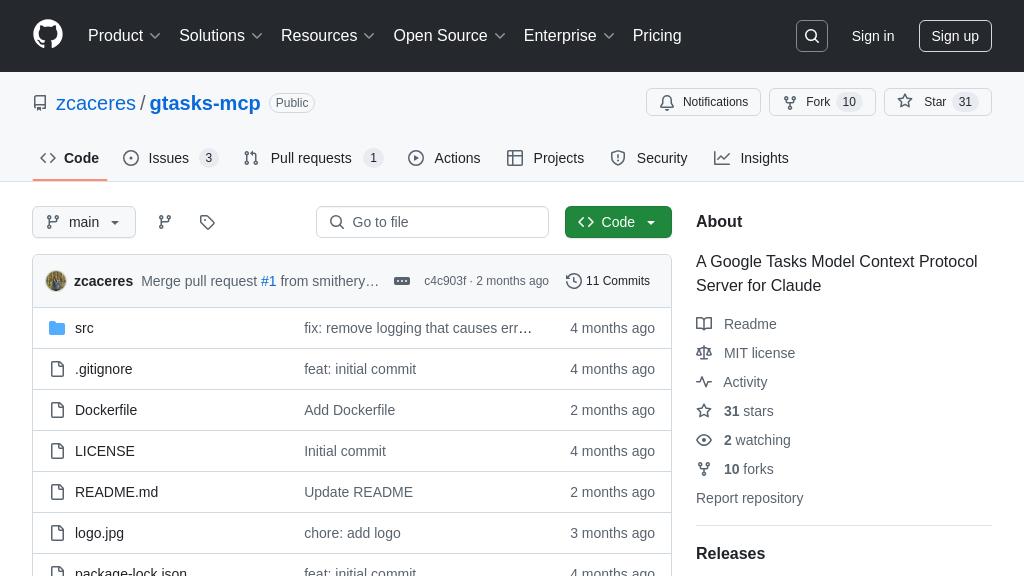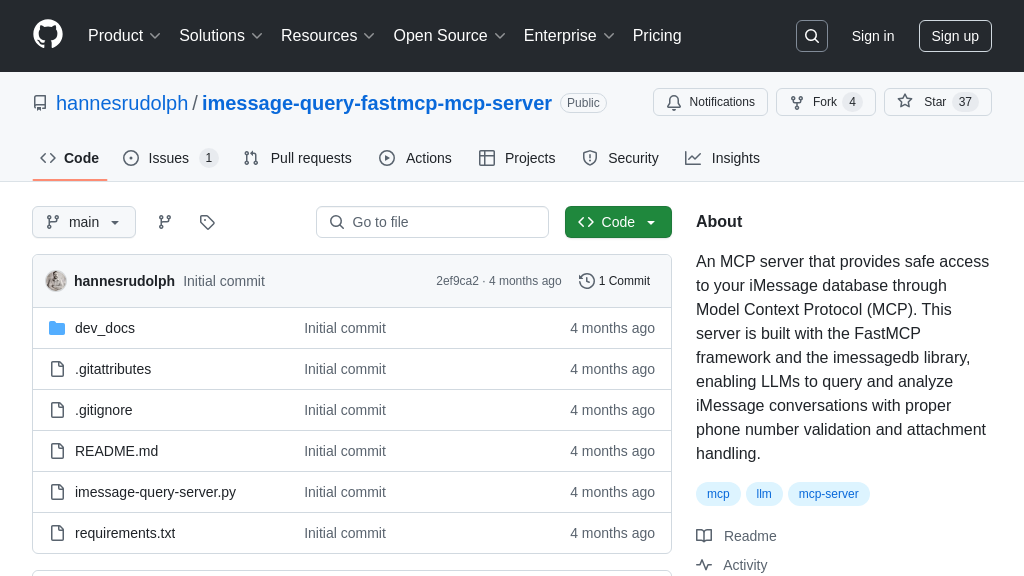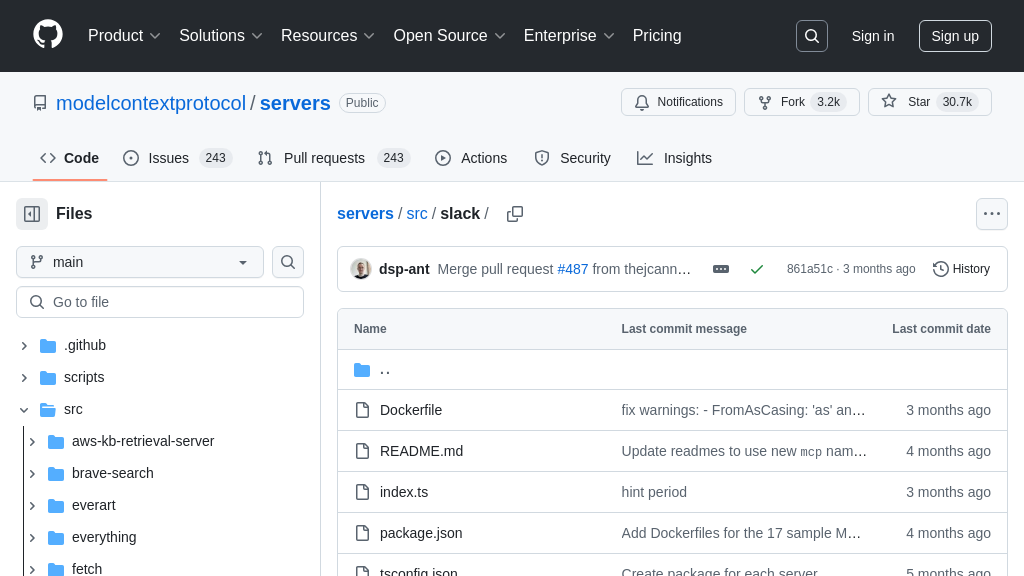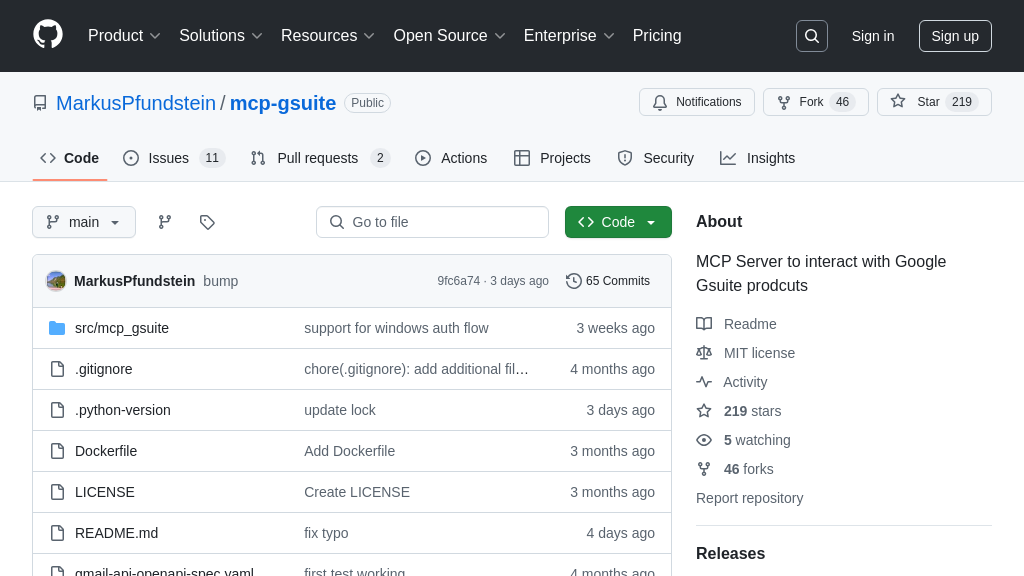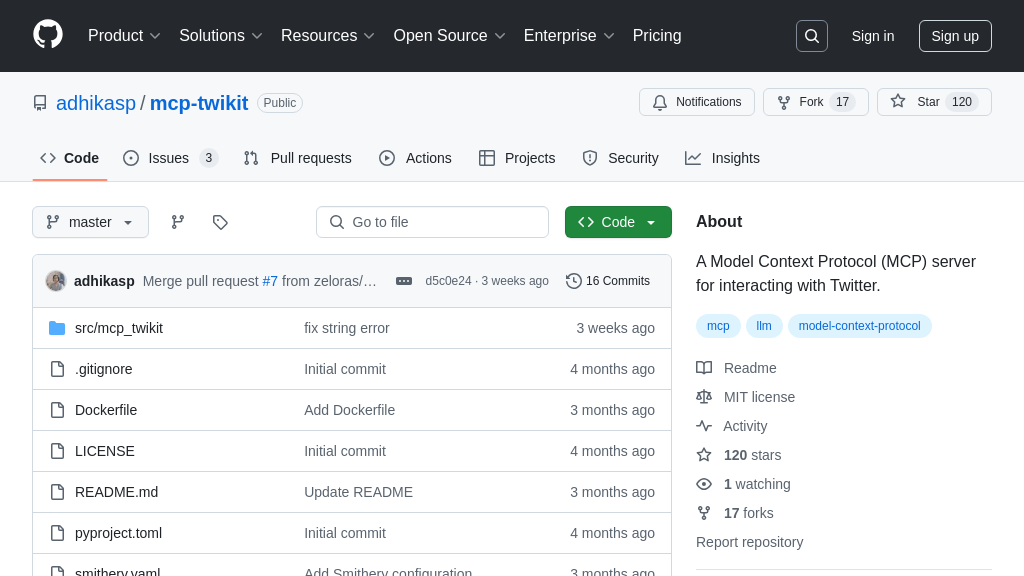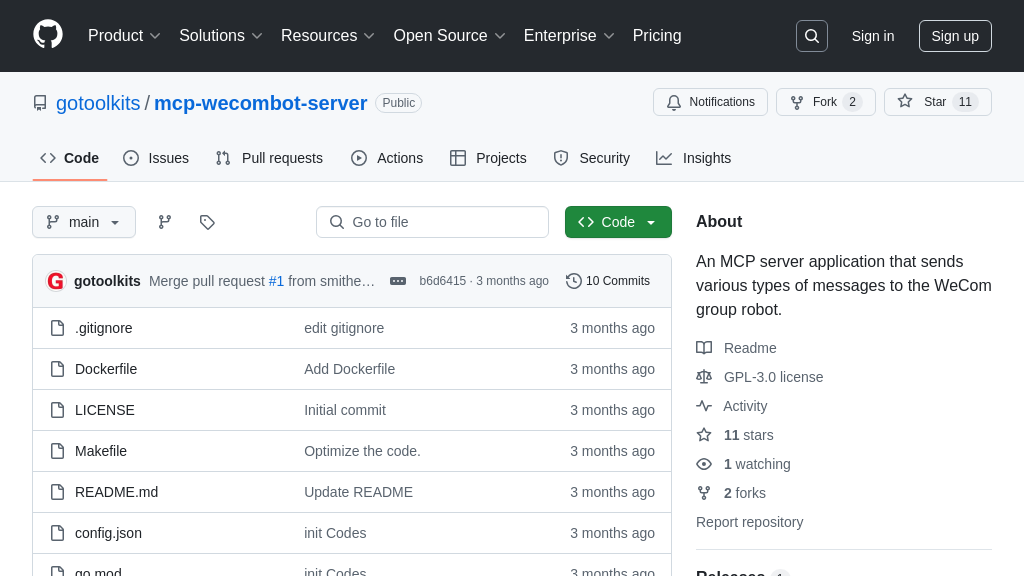mac_messages_mcp
Mac Messages MCP: Securely connect AI models to macOS Messages via MCP for querying and sending iMessages.
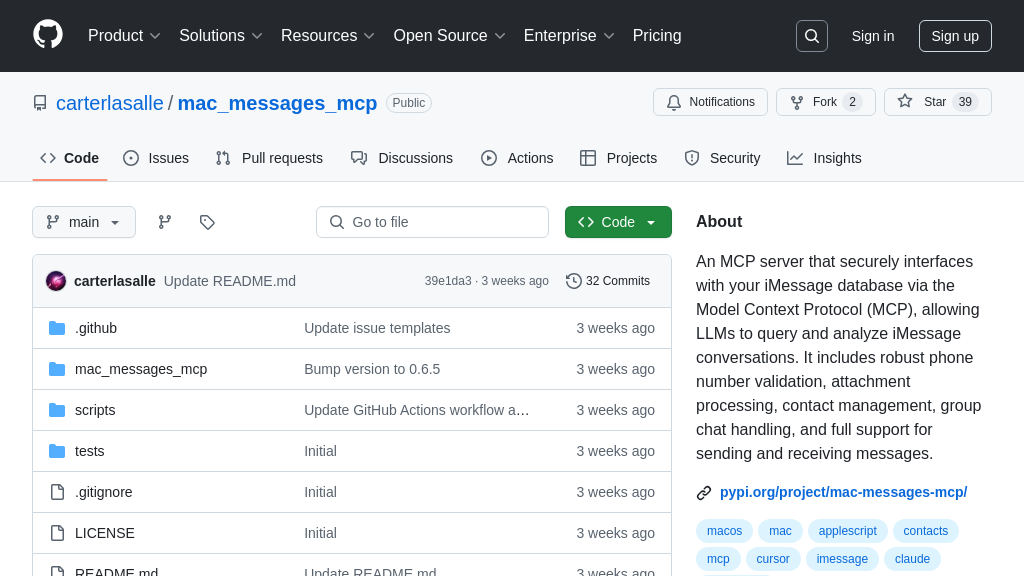
mac_messages_mcp Solution Overview
Mac Messages MCP is an MCP server designed to securely connect AI models with the macOS Messages app, enabling intelligent analysis and interaction with iMessage conversations. This Python-based solution allows AI to read recent messages, filter by contact, and even send new messages, all through a standardized MCP interface. It addresses the challenge of securely accessing and utilizing personal communication data within AI applications.
Key features include robust phone number validation, attachment processing, and group chat handling. By integrating Mac Messages MCP, developers can build AI-powered tools that summarize conversations, provide context-aware responses, or automate message-related tasks. The server interacts directly with the iMessage database, requiring full disk access permission. Installation is streamlined via uv package manager, with simple integration steps for platforms like Claude Desktop and Cursor. This empowers developers to leverage the wealth of information contained within iMessage for innovative AI applications.
mac_messages_mcp Key Capabilities
iMessage Conversation Retrieval
The mac_messages_mcp server allows AI models to retrieve recent iMessage conversations directly from the macOS Messages app database. This functionality enables the AI to analyze communication patterns, extract key information from past conversations, and maintain context over time. The server filters messages based on specified criteria, such as time range or contact, providing relevant data to the AI model. This ensures that the AI has access to the necessary information to provide informed and context-aware responses. For example, an AI assistant could use this feature to recall previous discussions with a user before responding to a new query, leading to more personalized and relevant interactions. The server accesses the Messages database using Python and requires Full Disk Access permission on macOS.
Programmatic iMessage Sending
This feature enables AI models to send new iMessages directly through the macOS Messages app. This allows the AI to proactively communicate with users, send reminders, or initiate conversations based on predefined triggers or user requests. The server handles the complexities of interacting with the iMessage service, allowing the AI model to focus on generating the content of the message. For instance, an AI-powered scheduling assistant could automatically send appointment reminders to users via iMessage. The send_message function takes the recipient's phone number and the message content as input and returns the result of the operation.
Contact-Specific Message Filtering
The mac_messages_mcp server provides the ability to filter messages by contact, allowing AI models to focus on conversations with specific individuals or groups. This is particularly useful for AI applications that need to analyze communication patterns or extract information from interactions with particular users. By filtering messages by contact, the AI model can avoid processing irrelevant data and focus on the information that is most relevant to its task. For example, a customer service AI could use this feature to review past interactions with a specific customer before responding to a new inquiry. The server uses the contact information stored in the macOS Contacts database to accurately identify and filter messages.
Technical Implementation
The mac_messages_mcp server is implemented in Python and leverages the uv package manager for dependency management. It requires macOS and Python 3.10 or higher. The server interacts directly with the macOS Messages database, requiring Full Disk Access permission. The server can be installed from PyPI or from source. The server exposes its functionality through a command-line interface and a Python API. The server is designed to be easily integrated with AI models and other applications. The use of uv ensures a consistent and reproducible development environment.
